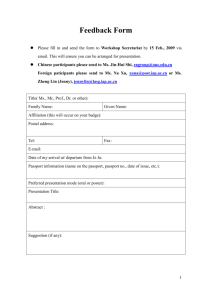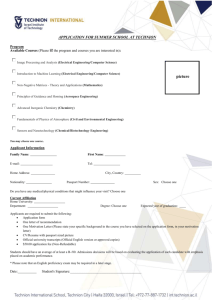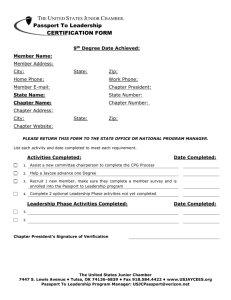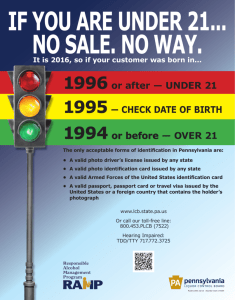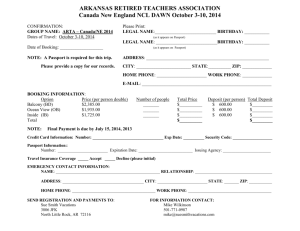Communication Passport Powerpoint
advertisement
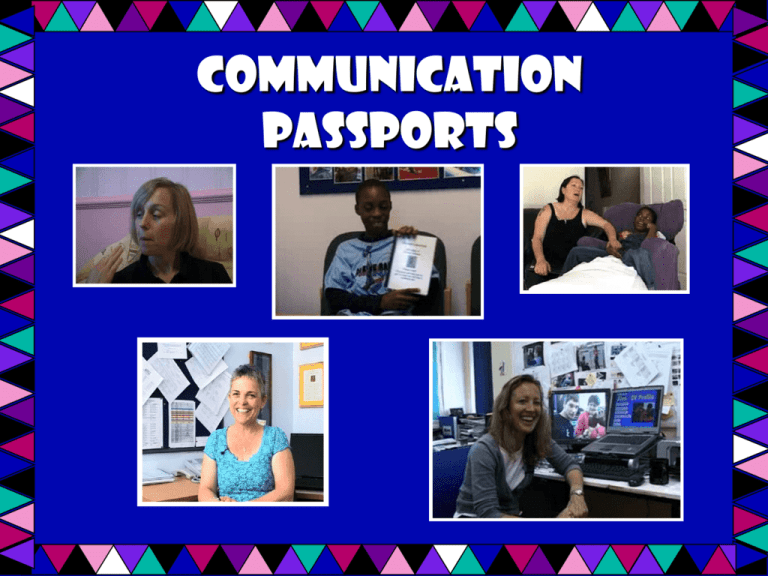
Communication Passports The Young Person’s View Views of Colleagues Video advice What is a communication passport? • A Communication Passport supports a person to convey information about themselves. They help people to understand others who often require support with communication or who are non-verbal. • It contains information about how the person communicates and may also include other information which is important such as medical or physical information; likes and dislikes • Communication Passports are positively phrased and focus on what the person can do and how, rather than their limitations • Photo and video samples of real passports Who owns a communication passport? • Communication Passports are owned by the person who requires support with communication, to answer questions or convey information about themselves • Communication Passports are used by or with anyone the owner chooses, either with them or in their absence Why use one? • To value the person and to give them a voice • To give them control over their communication and the way that people work with them • To provide agreed, consistent and accessible information about a person which will help others to understand them and their personal needs • To allow information to be disseminated directly and without delay • To provide continuity during times of transition or change How do you create one? • There are various formats for Communication Passports, which can be changed with the person. The Communication Passport is flexible and can be adapted from home, through the early years setting, through school and beyond. Communication Passports should develop to reflect the person’s needs as they change. It is important to provide information and formats which are age appropriate. • Photos Formats Willow Dene KS1/2 passport Charlton School Sensory Profile Symbols Profile Progress File Early Years KS3 Inclusion Call Centre Team Passport Portage Starter “This is me” EYIC personal passport Policy Behaviour passport KS2 personal profile All About Me Communication passports should: • be regularly reviewed • always be easily accessible • belong to the person and should be written in the first person • be produced by the person or people who know them best in conjunction with all relevant professionals e.g. parents, teachers, therapists Confidentiality statement (sample statement) MY PASSPORT - PRIVATE AND CONFIDENTIAL • • My passport contains privileged and confidential information. It was developed with the intention that I could use it partly as a communication tool in educating new people on how to best meet my needs. It should be handled and kept as any other private and confidential document. Therefore whenever possible I should be present when viewing the passport. If not, then the professional should use their discretion on who has access to the information included in the following pages. It is possible to print parts of the profile or to put sections onto video, so if only some of the information is applicable to a person this information can be separated. Confidentiality statement – cont. • The passport was developed with as much input from myself and everyone involved with me. I’m proud of all the positive achievements it shows and I enjoyed sharing it with people. • (adapted from Charlton School) With thanks to all who contributed to the creation of this resource


